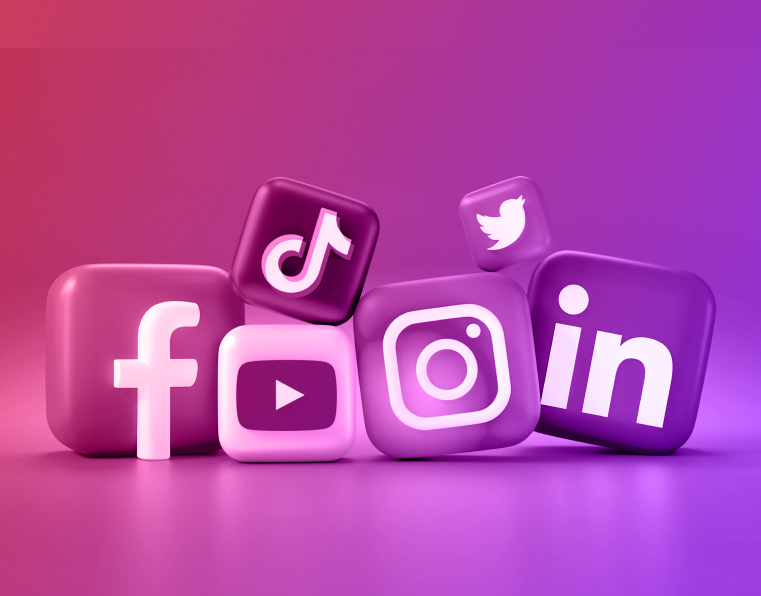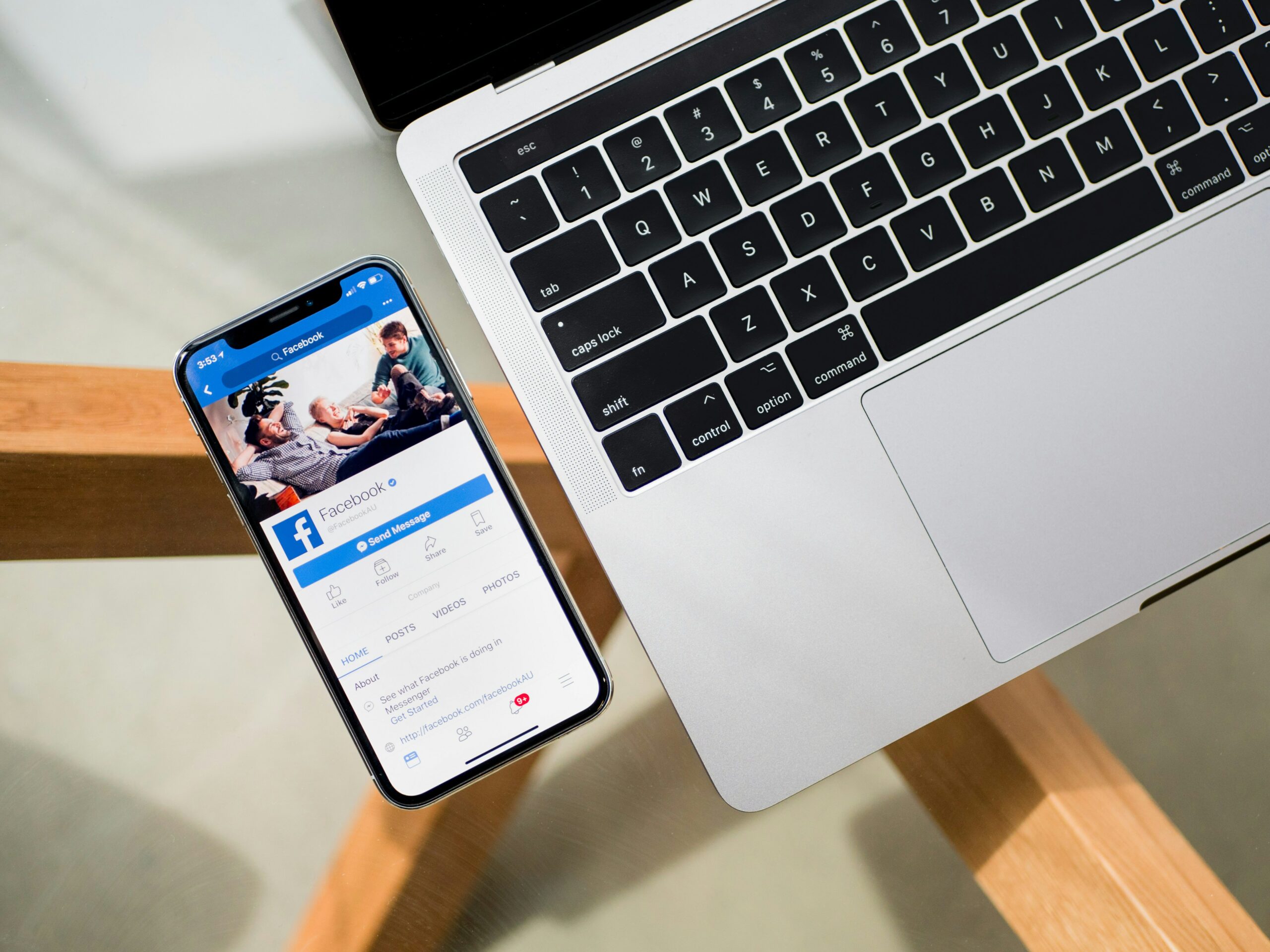Blog
Unlocking Social Success: How to choose the right social media platform

The digital space is constantly evolving, making it increasingly difficult for businesses to stand out amongst online noise. With more users now using social media apps in ways that are traditionally reserved for search engines, it’s becoming increasingly important for brands to have a strong presence on the latest and greatest social media channels; enabling them to convert those casual scrollers into paying customers.
So how can you choose the right social media platform for your business? Let’s dig a little deeper…
A deep dive into common social media platforms
Before we discuss the differences between paid and organic social media and how to measure success, it is important to understand each platform, so you can make an informed choice about which one is right for you.
Launched in 2003, LinkedIn is the biggest social media platform for business and employment. Designed for professional networking and career development, it enables users to connect with colleagues, search for jobs and share industry insights.
LinkedIn is ideal for B2B brands who are looking to grow their professional following, establish thought leadership and recruit talent. The platform’s robust targeting options allow for precise audience segmentation based on job titles, industries and professional interests.
However, there are some drawbacks to using LinkedIn. These include:
- Higher advertising costs: LinkedIn ads tend to be more expensive than other platforms due to its professional audience and specialised targeting.
- Limited audience: Primarily suited to B2B marketing, LinkedIn is not as effective for B2C brands.
- Lower engagement rates: Users visit LinkedIn less frequently than other social networks, resulting in lower engagement rates.
Meta (Facebook and Instagram)
Meta owns the world’s two largest social media platforms, Facebook and Instagram. Established in 2004, Facebook remains the most popular choice for brands looking to reach a wide audience; whilst Instagram focuses on visual content sharing amongst the younger demographics.
Facebook enables brands to engage with customers through dedicated pages and groups, run detailed ad campaigns with robust analytics, and utilise Marketplace for selling products. But if you’re looking to target younger age groups with image-based content that emphasises storytelling and influencer marketing collaborations, Instagram could be the ideal choice for you.
Potential limitations to Meta platforms include:
- Algorithm changes: Frequent changes to the algorithms can affect organic reach and engagement.
- Ad fatigue: A high volume of ads can lead to user fatigue, potentially reducing ad effectiveness over time.

At its core, Pinterest is a visual pinboard, allowing users to source ideas for various projects and interests. From recipes and fashion to home decor and DIY, there’s inspiration to be found within every search on Pinterest.
The platform is most suited to brands in the lifestyle, fashion, food, beauty and home decor sectors. It excels at driving traffic to websites and e-commerce stores, with users seeking to make purchases or gather ideas for future buys. Pinterest’s unique format allows brands to showcase their products or services in a visually appealing and inspirational context.
Pinterest is often overlooked as a social media platform. This is due to its:
- Niche user base: Pinterest is predominantly used by a specific demographic (female DIY enthusiasts) which may not suit all brands.
- Limited engagement: Users often browse Pinterest passively to gather ideas, rather than actively engaging with brands.
- Ad integration: Ads need to seamlessly blend with organic content to be effective, which requires much more creative effort.
X (formerly Twitter)
Hailed as the king of microblogging, X allows users to post and interact with “tweets”. Used by a wide range of individuals, businesses, celebrities and public figures, the social media site is renowned for its live updates and strong conversion rates.
If your goals are to engage in real-time conversations, provide exceptional customer service, stay on top of industry trends and participate in trending topics, it is well worth focusing your efforts on X.
Some of X’s limitations include:
- High volume of content: The fast-paced nature means content can quickly get buried, requiring constant activity.
- Short lifespan of posts: Tweets have an extremely short lifespan, often lasting just a few minutes to an hour.
- Negative engagement: The public nature of the platform can lead to negative comments and brand trolling, requiring diligent monitoring.
TikTok
Established in 2016, TikTok is the newest short-form video-sharing social media app that has rapidly gained in popularity, especially amongst Generation Z. It allows users to create and share 15-second to 3-minute videos on any given topic.
Brands who are looking to reach younger audiences with creative, engaging content should be posting on TikTok. The app is ideal for brand awareness campaigns, influencer partnerships, and viral content that resonates with its trend-driven culture. The algorithm enables content to go viral quickly, offering significant organic reach opportunities.
Although TikTok is the platform of choice for Gen Z, it does have some drawbacks. These include:
- Content creation: TikTok requires continuous creative content production to maintain engagement.
- Ad integration: Ads need to be highly creative and native to the platform to avoid being skipped.
- Brand suitability: Not all brands will find their target audience on TikTok, especially those targeting older demographics.

Paid vs organic social: which one is better?
While focusing solely on one approach might be tempting, true social media success comes from balancing paid and organic strategies. If you’re aiming for quicker results, paid promotion can amplify your message, reaching wider audiences faster than organic growth alone.
Organic social media is your everyday content that helps to slowly build up an audience of trusted followers. An increase in revenue should not measure organic success; rather, it should be viewed entirely as a brand awareness exercise.
Paid social media can help convert casual window-shoppers into paying customers by targeting them with conversion-driven ads. Much of the data used to target your customers will come from lookalike audiences i.e. people who follow you on social media or view your website. Therefore, the bigger your audience, the better the data…

Defining your social media success
Your on-channel goals
Before you start absent-mindedly posting on all those available digital platforms, defining your goals is vital. These provide a solid foundation for measuring social media success later down the line. With organic social media, it is important to focus on measurable goals ‘on-channel’, rather than the immediate impact on your business’ bottom line.
Social following
When first approaching the world of social media, many businesses focus all their efforts on increasing social following. Whilst increasing your following may not directly affect your bottom line, it enables you to build a larger audience. This audience, that are initially showing interest, can be used further down the marketing funnel to convert customers.
Brand awareness
Brand placement to a target audience is challenging. Organic social media serves as a vital backbone for building brand awareness, allowing you to boost brand visibility and improve recognition.
Community building
The ultimate goal for any brand is to build a community of engaged advocates. By building a small team of die-hard fans who are true supporters of your brand, it is possible to receive a consistent level of organic growth via UGC (user-generated content).
Conversions
Increasing conversions is a bottom of funnel marketing activity that is the ultimate goal for any ambitious business. It helps brands drive sales faster whilst staying within budgets, enabling them to effectively sell to individuals who are not marketing-minded.

Measuring business impact
If you are focusing more on paid campaigns to drive direct business impact, it is important that you define these targets before launching your campaigns. Success from paid social media comes down to your individual business goals. However, tracking your post reach, views, and followers, as well as monitoring traffic to key website landing pages, are some of the most common ways to measure social media effectiveness.
Conversion volume
Conversion volume refers to the total number of desired actions taken by users as a result of your social media campaigns i.e. purchases, newsletter sign-ups or downloads. This metric is crucial for understanding how well your ads are driving user actions.
Conversion cost
Conversion cost measures the amount of money spent to achieve a single conversion. This is calculated by dividing the total spend on a campaign by the number of conversions. Lowering your conversion cost is essential for maximising the efficiency of your ad spend and ensuring positive ROI (return on investment).
Conversion quality / type
Analysing conversion quality helps to refine your targeting and improve campaign effectiveness. For example, a high-quality conversion could be a purchase from a high-value customer or a subscription from a user who actively engages with your content.
ROAS (Return on Ad Spend)
ROAS measures the revenue generated for every dollar spent on advertising. It’s a critical metric for e-commerce and service-based businesses to evaluate the profitability of their ad campaigns. A higher ROAS indicates that your ads are effectively drawing sales and generating substantial revenue relative to the ad spend.

Unlock your social success with SOZO
Looking to elevate your brand’s social media presence? If your paid ads are not performing as well as you’d like, or you need some assistance with organic social media post creation, SOZO can help. Our dedicated team of social media specialists will work with you to find the best platform for your business; enabling you to grow your brand faster than ever before.
Get in touch with tom@sozodesign.co.uk to discuss your social media requirements today.
you might also like… you might also like…
Sign up to our newsletter
Keen to learn more about how to grow online?
Get our latest advice articles, masterclass
videos and webinars.
curious for more?













